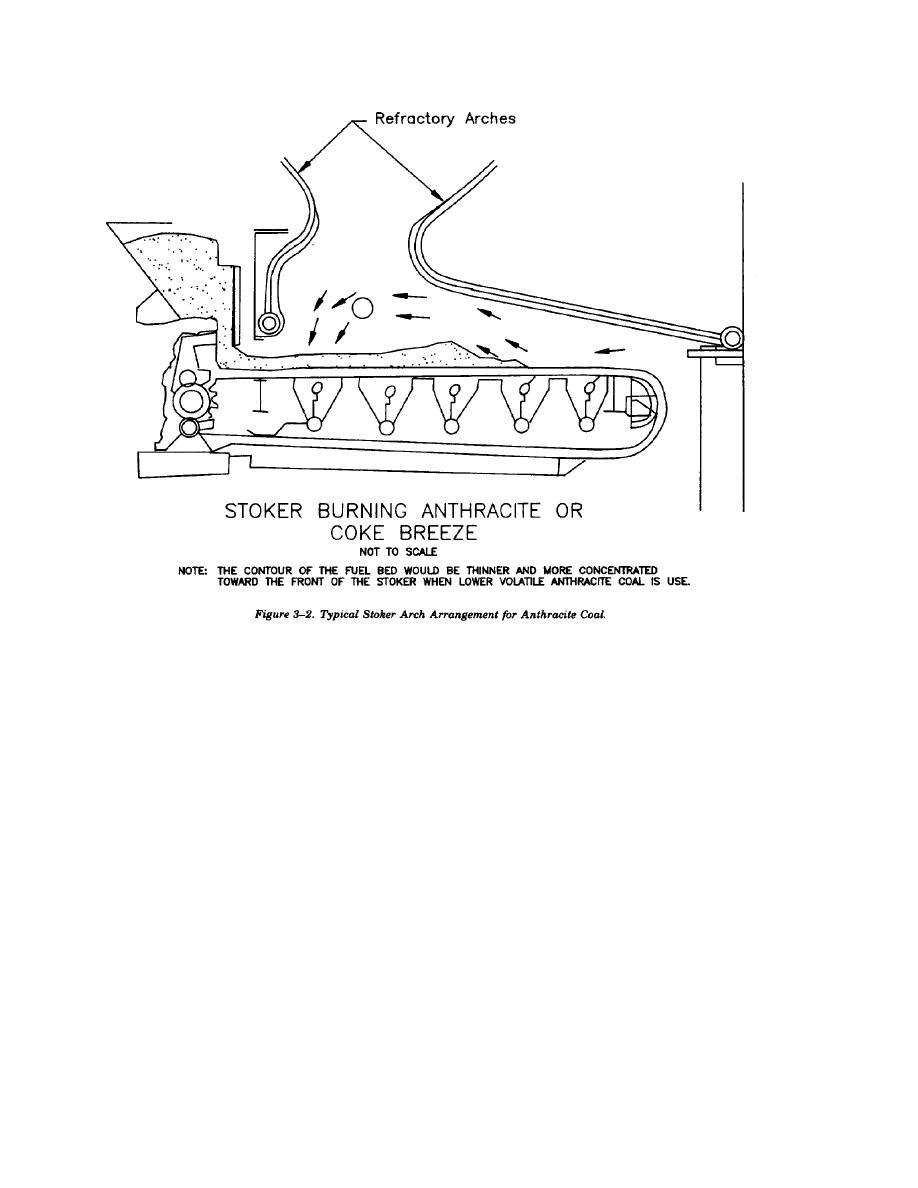
TM 5-810-15
f. Coal analysis. Two analyses of coal are com-
or sold. If sulfur capture is not required then
monly used to determine the classification and
another maufacturer recommended inert material
constituents of coal: proximate analysis and ulti-
such as sand may be used. ACFB fuel flexibility
mate analysis. Proximate analysis provides the per-
includes the following list of potential fuels--
centage content by weight of fixed carbon, volatile
(1) Anthracite coal
matter, moisture, and ash, and the heating value in
(2) Anthracite culm
Btu per pound. These classifications are shown in
(3) Bark and woodwaste
table 3-3. Ultimate analysis provides the percentage
(4) Bituminous coal
(5) Bituminous gob
oxygen, and sulfur. These data are used to
(6) Gasifier char
determine air requirements and the weight of
(7) Industrial sludges, wastes, residues
combustion by-products, both of which are used to
(8) Lignite
determine boiler fan sizes. Table 3-4 lists coal and
(9) Municipal refuse
ash analysis together, ash fusion temperatures and
(10) Oil
other data needed by boiler manufacturers for the
(11) Oil shale
design and guarantee of boiler performance.
(12) Paper products waste
g. Alternate ACFB boiler fuels. ACFB systems
(13) Peat
when properly designed can burn a wide variety of
(14) Petroleum coke
materials that contain carbon. Many can be utilized
(15) Phenolic resins
by themselves, while others are limited to a certain
(16) Plastics
percentage of total heat input as part of a mixture
(17) Sewage sludge
with another fuel. Fuels with sulfur are burned in
(18) Subbituminous coal
combination with a calcium rich material such as
(19) Textile waste
dolomite or limestone. Sulfur is removed as
(20) Shredded tires
calcium sulfate in the baghouse and either landfilled
3-4


 Previous Page
Previous Page
